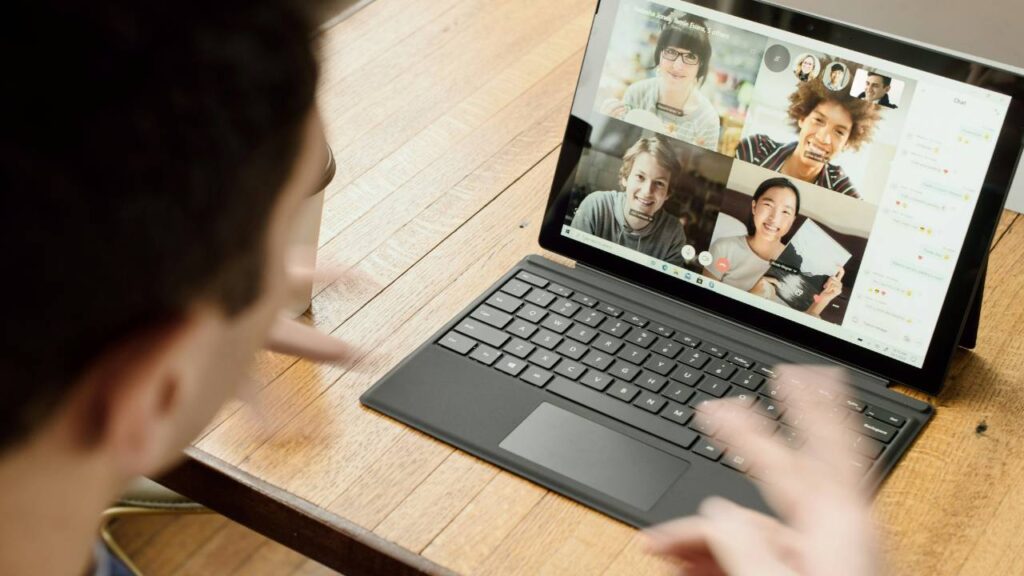
Choosing the right video conferencing equipment is a critical decision in the era of hybrid and remote work. Your choice can significantly influence the quality of communication and collaboration during virtual meetings. Whether you’re part of a small business or a large corporation, the equipment you select should cater to your specific needs, ensuring that every participant can connect seamlessly and engage effectively with the team.
When assessing various options, consider the size of your team and the nature of your work. Look for systems that offer clear audio and video, as these are fundamental for successful communication. User-friendly interfaces and compatibility with different devices and operating systems are also important factors, as they can considerably reduce setup times and technical difficulties.
Furthermore, keep an eye out for features that enhance collaboration. Tools such as screen sharing, whiteboarding, and real-time file-sharing can significantly boost productivity. Opt for solutions that provide secure connections and have a track record of reliable performance. By focusing on these aspects, you’ll be better equipped to foster a dynamic and connected work environment, no matter where your team is located.
Determining Your Video Conferencing Needs
Selecting the right video conferencing equipment hinges on understanding the specific demands of your meetings and the configurations of your working environment. Whether you’re accommodating remote employees or planning sessions in various meeting rooms, your choices should reflect these requisites.
Assessing the Type and Size of Meetings
When evaluating the type and size of your meetings, consider the usual number of participants and the nature of the interactions. Small gatherings, like huddles in a huddle room, may only require a simple webcam and microphone setup, while large-scale conferences could benefit from a more robust video conferencing system complete with high-definition cameras and omnidirectional microphones.
- Small meetings (2-6 participants):
- Webcam with 1080p resolution
- USB microphone or a combined speakerphone
- Medium-sized meetings (7-12 participants):
- Professional conferencing camera with a wider field of view
- Tabletop microphone system or ceiling-mounted mics
- Large conferences (13+ participants):
- PTZ (Pan-Tilt-Zoom) camera
- Multiple microphones and speakers for adequate coverage
- Dual monitors for better presentation and interaction
Considering Remote and Hybrid Working Scenarios
For scenarios involving remote or hybrid working, compatibility with various devices and collaboration platforms is crucial. Ensure that the video conferencing equipment supports seamless integration with the tools your remote employees use.
- Remote 1-on-1 calls or small team meetings:
- A high-quality USB webcam and headset
- Noise-cancelling microphone for clear audio
- Hybrid scenarios (in-office and remote employees):
- Echo cancellation and speakers that prevent feedback
- Cameras that automatically adjust to lighting conditions and participant positioning
- Consistent user experience across different spaces:
- Uniform systems in all meeting rooms for easy switch between spaces
- Equipment that supports quick setup for spontaneous meetings
Your video conferencing infrastructure should be tailored to improve your communication flow while being versatile enough to handle various types of meetings and work settings. It is also crucial that the infrastructure incorporates robust security measures to protect against cyber threats that could disrupt operations or compromise sensitive data. Catering to these details will enhance the safety, efficiency and quality of your virtual interactions.
Selecting Video Conferencing Equipment

Selecting the right video conferencing equipment can significantly enhance your remote communication experience. Focus on quality, compatibility, and your specific needs to ensure clear, reliable, and effective virtual meetings.
Camera and Microphone Essentials
Your video and audio quality are crucial to effective communication. Be sure to choose a webcam with high-definition video capabilities, such as 1080p resolution, and consider a camera that has an integrated or separate high-quality microphone for crystal-clear audio. A good webcam should have:
- Autofocus – Keeps the video sharp during movement.
- Field of View – A wider angle is beneficial for group meetings.
- Low Light Performance – For clear video in any lighting conditions.
For microphones, key features include:
- Noise Cancellation – Reduces background noise interference.
- Omnidirectional – Picks up sound from all directions; ideal for group settings.
Display and Sound Output
Your display should be large enough to see everyone clearly and share content comfortably. Look for:
- High Resolution – A minimum of 1080p for crisp visuals.
- Adjustable Stands – To align the screen to eye level.
For sound output, integrated speakers in your display may suffice for smaller rooms. For larger settings, consider:
- External Speakers – Provides higher-quality audio and volume control.
- Speakerphone – With built-in microphones for all-around better sound.
Compatibility and Integration
Ensure your equipment is compatible with your preferred video conferencing platforms. Check for:
- Plug-and-Play – Simple USB connections for ease of use.
- Software – Some devices come with proprietary software for additional features.
Integration with your current systems is key:
- Unified Communications (UC) Compatibility – Links your equipment with UC software for a smoother experience.
- Operating System – Check for compatibility with Windows, macOS, or other systems you’re using.
Select equipment that aligns with your organisation’s technology stack for seamless operation.
Evaluating Video Conferencing Software

When choosing video conferencing software, you’ll want to consider how it will blend into your daily operations and collaborate with your existing hardware.
Platform Features and Usability
Your first priority should be assessing the features and ease of use offered by different platforms. Applications like Zoom have become prominent due to their intuitive interfaces and comprehensive feature sets. A detailed list of features to compare includes:
- Meeting Capacity – Can the platform support the number of participants you anticipate?
- Screen Sharing – How easily can you share presentations and documents?
- Recording Capabilities – Are you able to record sessions for later review or for those who can’t attend?
- Security Protocols – Consider the importance of end-to-end encryption and user authentication.
Google Meet and Webex by Cisco both offer a strong suite of features tailored for corporate environments. Microsoft Teams Rooms is an extension for Microsoft Teams, enhancing meeting spaces with richer control and capabilities. Look for:
- Chat Functionality – Is in-meeting messaging seamless?
- Virtual Backgrounds – Do they offer virtual backgrounds for professional presentation?
- Interactive Tools – Are there polling, Q&A, and interactive whiteboards?
Efficient operation defines a user’s experience, so the ease of use should be a significant consideration when evaluating software.
Software-Hardware Synergy
The best video conferencing experience results from a well-synchronised combination of software and hardware. Ensure the software you select synergises effectively with the hardware brands and models you use, such as cameras and microphones from Logitech or Cisco.
- Compatibility – Check the compatibility of the software with your existing hardware.
- Quality – Does the software support high-definition video and high-fidelity audio with your equipment?
For example, Microsoft Teams Rooms is designed to work smoothly with certified hardware solutions, offering a cohesive experience. Consider:
- Ease of Integration – How easily can the software integrate with existing room systems or personal devices?
- Vendor Support – Do companies like Logitech provide dedicated support for integrating their hardware with cloud computing platforms like Zoom?
By paying close attention to these facets, your choice in video conferencing software will lead to more productive and less frustrating meetings.
Maximising Budget and Performance
When selecting video conferencing equipment, balancing your budget with the performance can greatly enhance your business operations, allowing for smoother and more productive meetings.
Cost-Effective Choices for Small Businesses
As a small business, you must be mindful of your expenses while obtaining technology that meets your needs. For instance, Logitech MeetUp is a compact all-in-one conference cam that’s a fit for small spaces and ideal for huddle rooms. Its 4K camera ensures high-quality video and the price ranges are reasonable when considering the long-term benefit to productivity. Here are some budget-friendly picks:
- Webcams – Look for business grade 1080p options, provide sufficient quality without the cost of 4K.
- Microphones – A standalone conference microphone can offer improved audio clarity over built-in camera mics.
- Speakers – Consider portable speaker phones which provide clear audio and can be easily moved between spaces.
Investing in Quality for Better Performance
For a more substantial performance impact, investing in higher-end equipment can be justified. The Cisco Board Series offers an immersive experience with sharp visuals and responsive touch interactions, though higher priced, these systems are designed for durability and an enhanced collaborative experience.
Performance Enhancements:
- High-Resolution Cameras – A 4K camera captures more detail and provides a better experience for participants.
- Integrated Systems – Some solutions integrate cameras, microphones, and speakers, streamlining your setup.
- Wireless Connectivity – For flexibility and ease of use, choose equipment that offers robust wireless connectivity options.
Ensuring Effective Communication and Collaboration

When selecting video conferencing equipment, your primary focus should be on tools that facilitate effective communication and collaboration. The right technology will help you conduct efficient video meetings, keep the audience engaged, and ensure seamless technical support.
Enhancing Audience Engagement
To keep your audience invested during video meetings, choose tools that support interactive features such as screen sharing and real-time polls. Employing a multi-camera setup allows for a more dynamic presentation and captures various angles, making the experience more immersive for remote participants. Consider equipment that’s intuitive for all end-users, ensuring that everyone, regardless of their tech-savvy level, can participate fully.
Huddle Spaces – Equip small meeting areas with portable webcams and speakerphones to enhance collaboration among on-site and remote team members. Ensure these tools integrate smoothly with your video conferencing platform.
Addressing IT and Technical Support
Your IT team is crucial for maintaining the effectiveness of your video conferencing technology. Invest in reliable equipment with solid manufacturer support to mitigate technical issues swiftly.
- Preventive Measures – Regular training for your team on troubleshooting common technical problems can keep your meetings on track.
- Manufacturer Support – Establish a direct line with the product’s customer service to ensure that any technical queries are promptly addressed.
- Technical Issues – Should technical glitches arise, having an agile and responsive IT team ensures minimal disruption to your collaboration efforts. Choose equipment with comprehensive warranty policies and service agreements to give you peace of mind.

